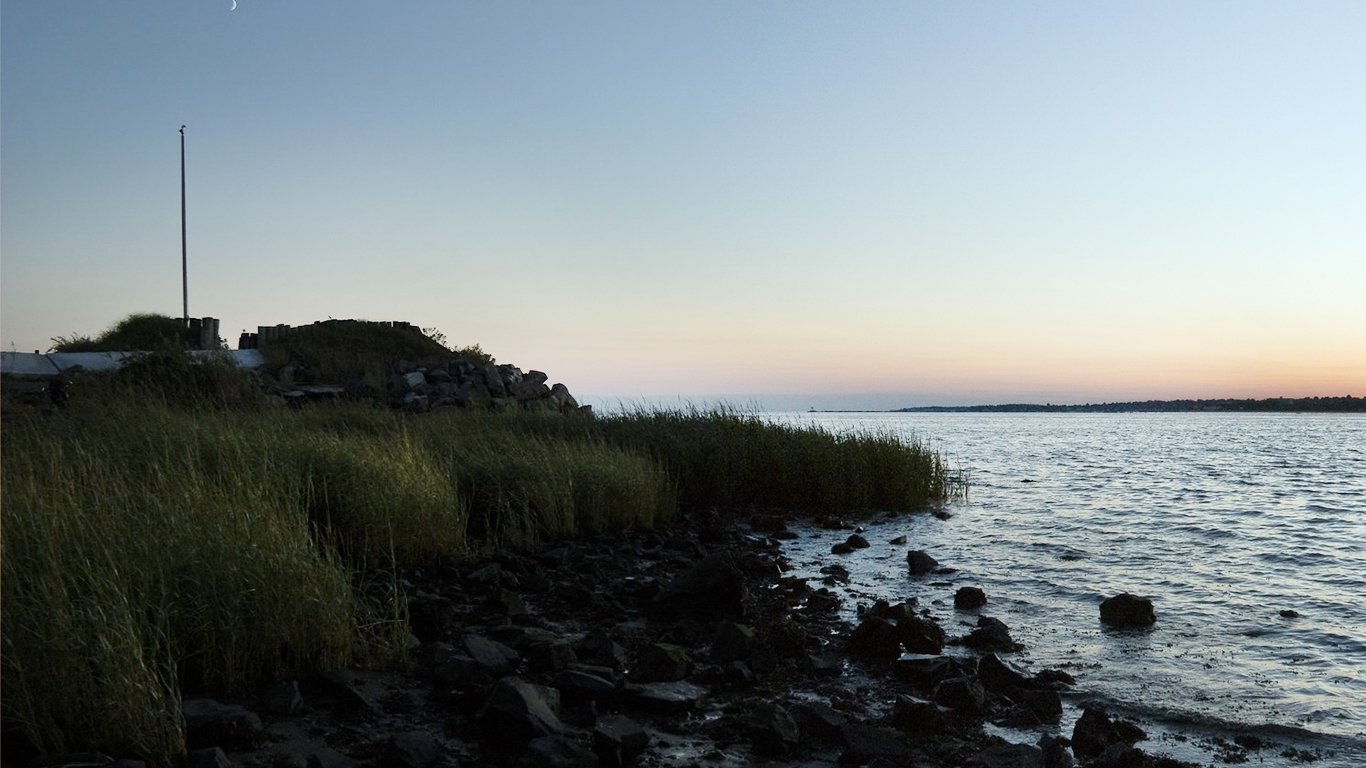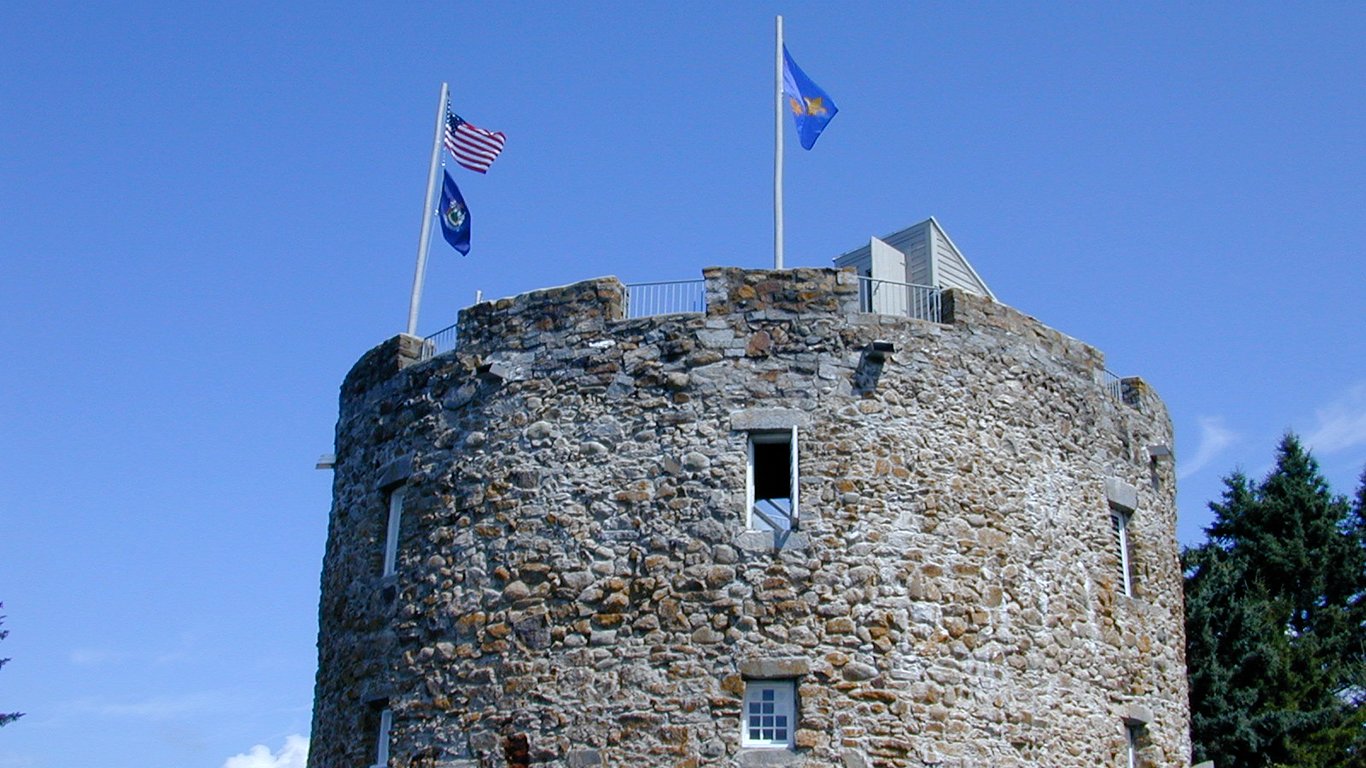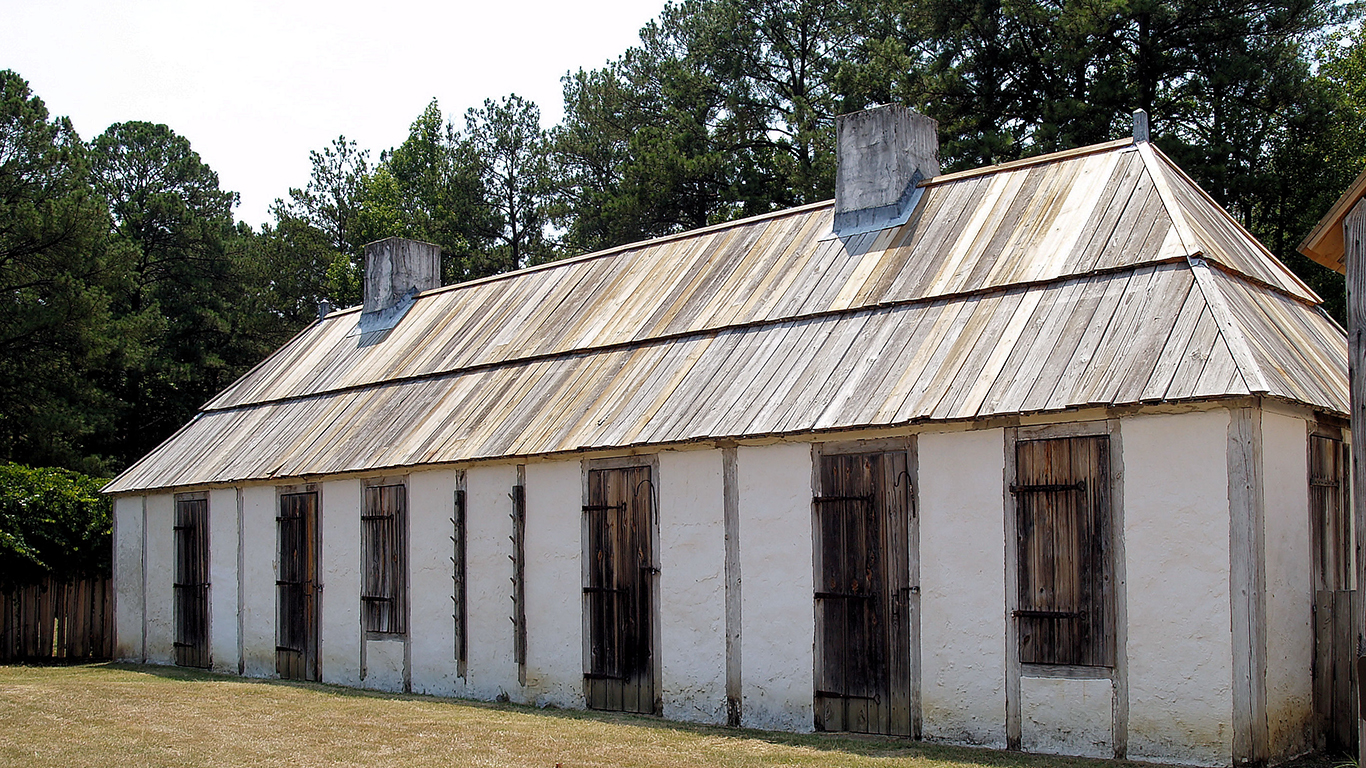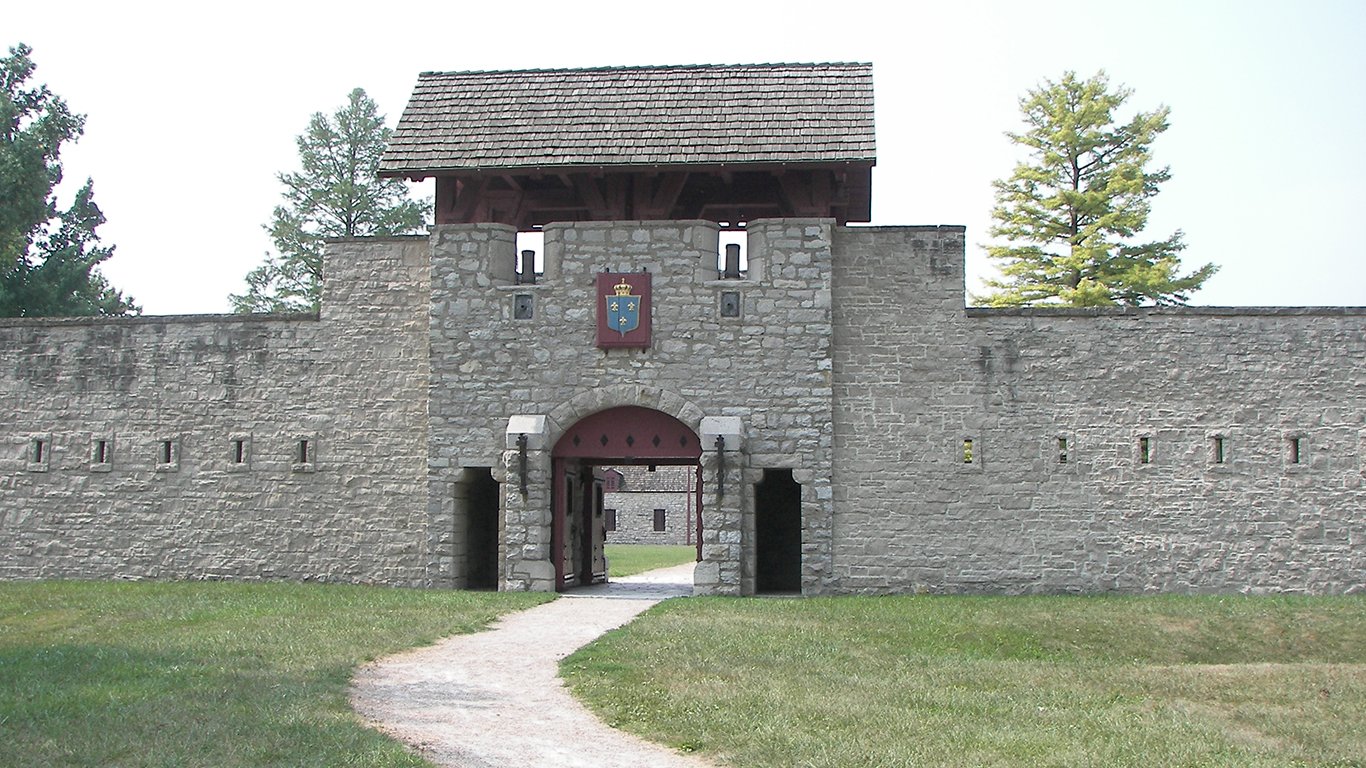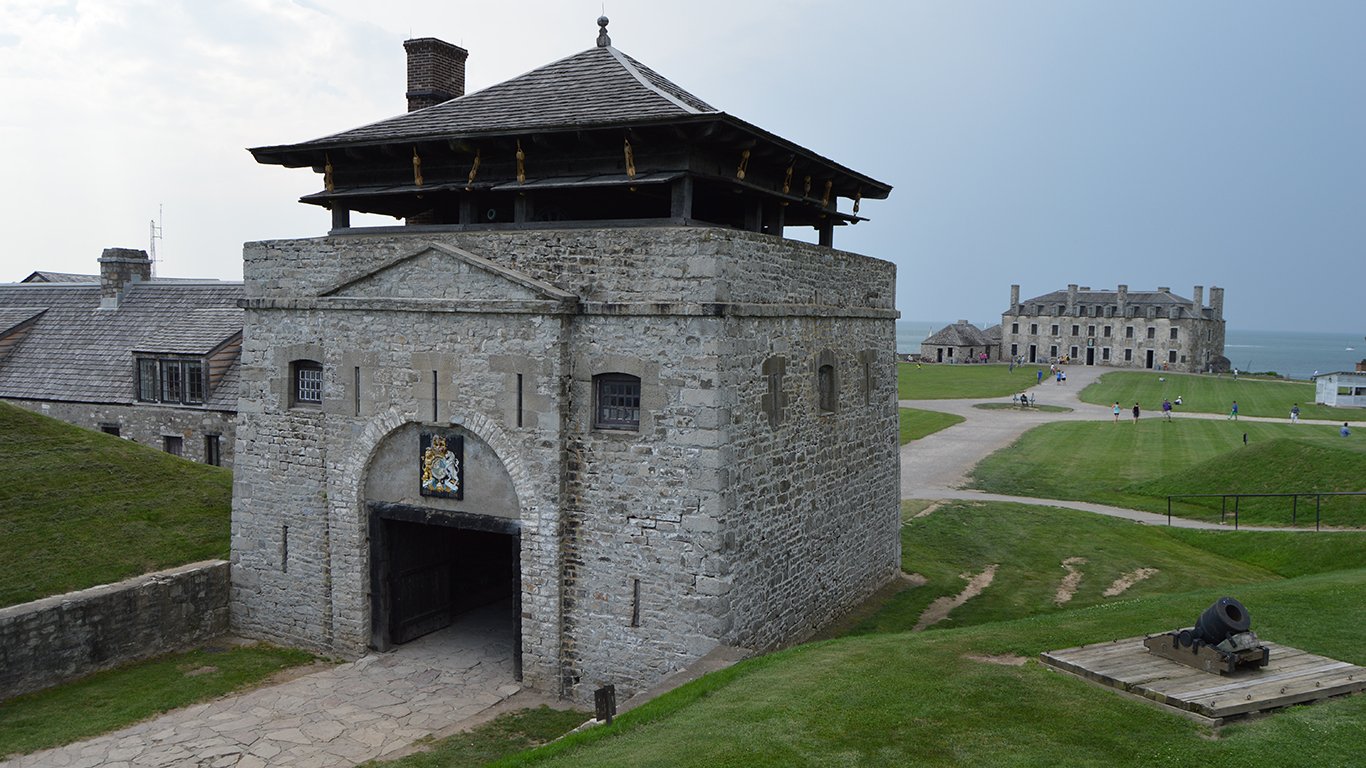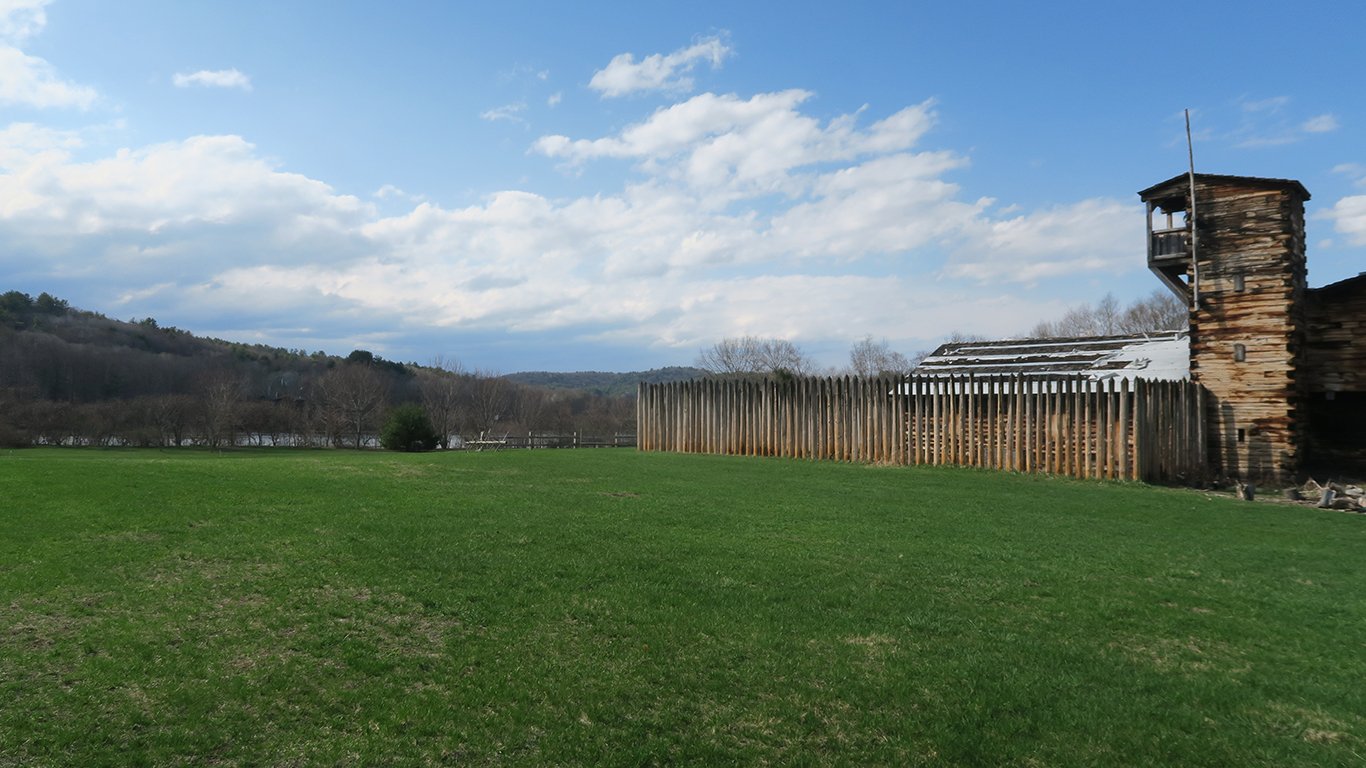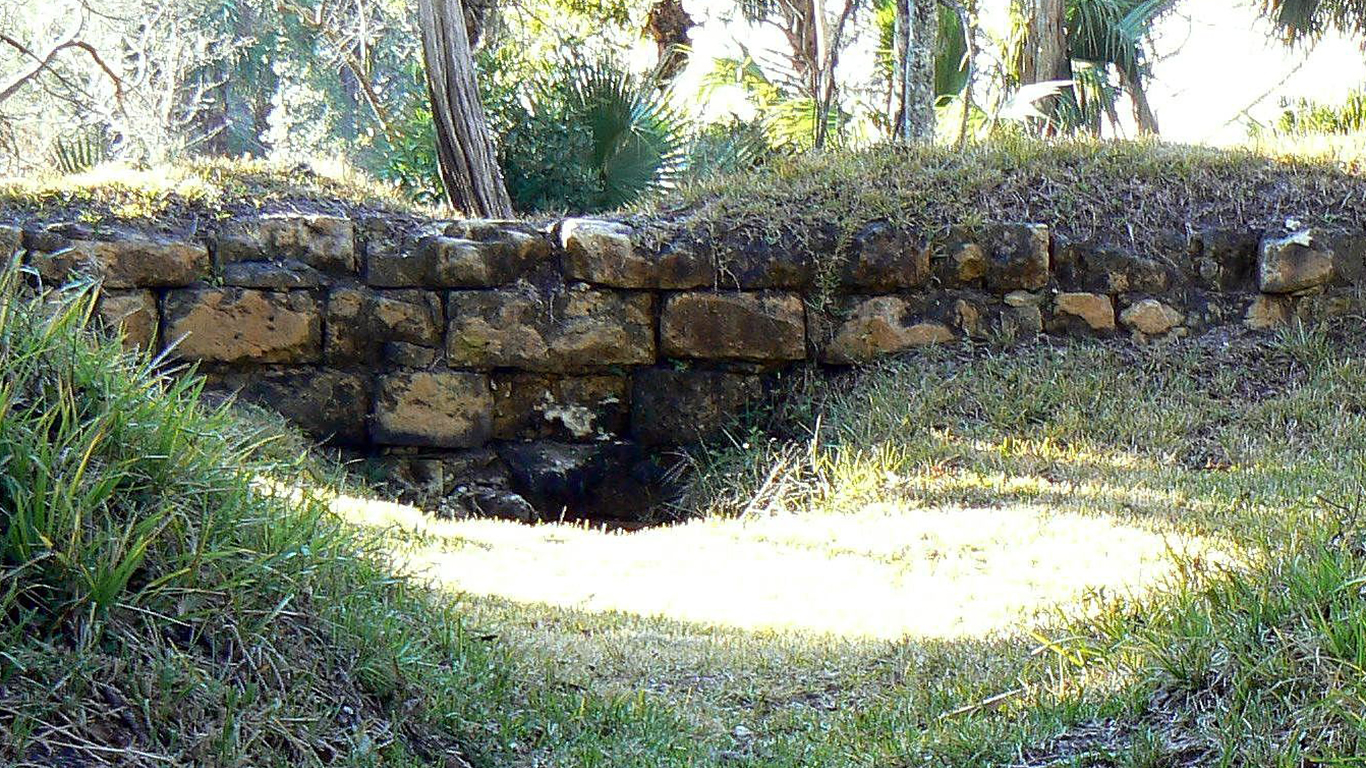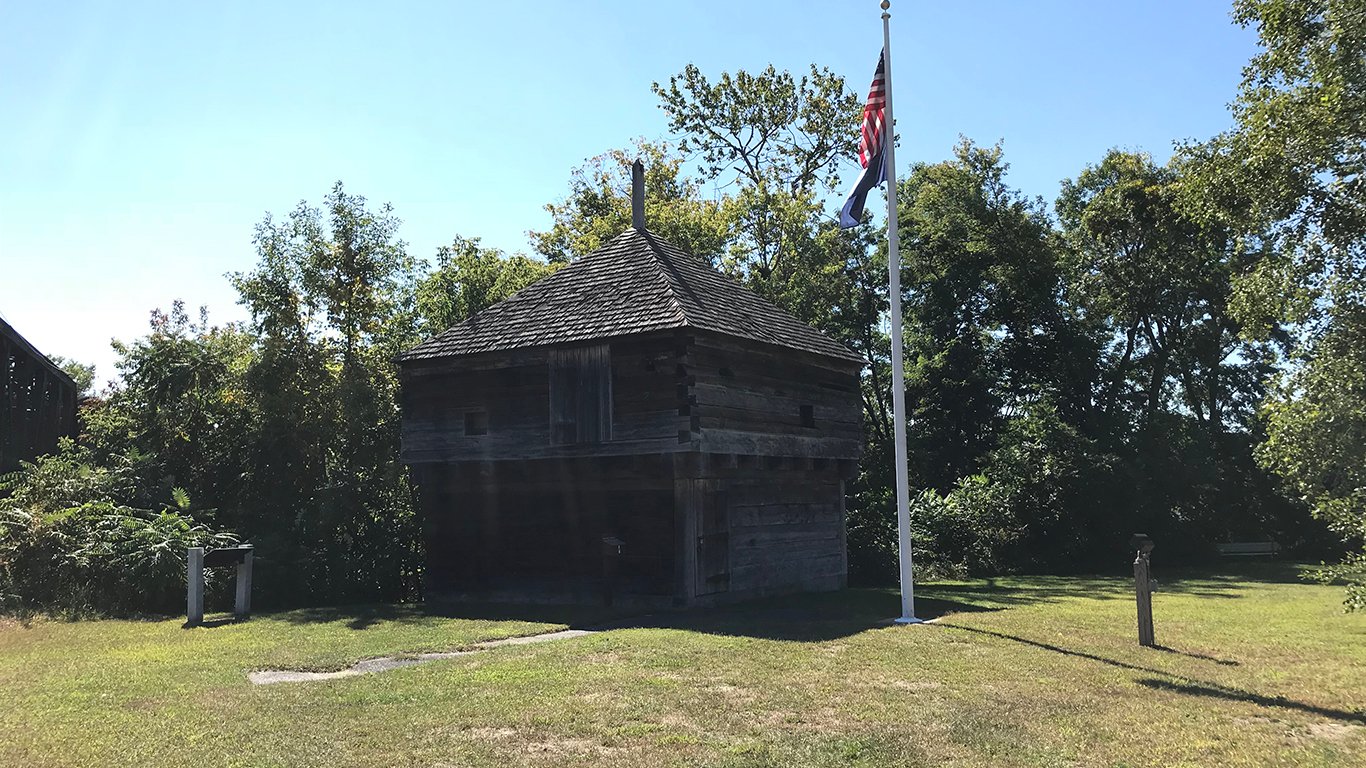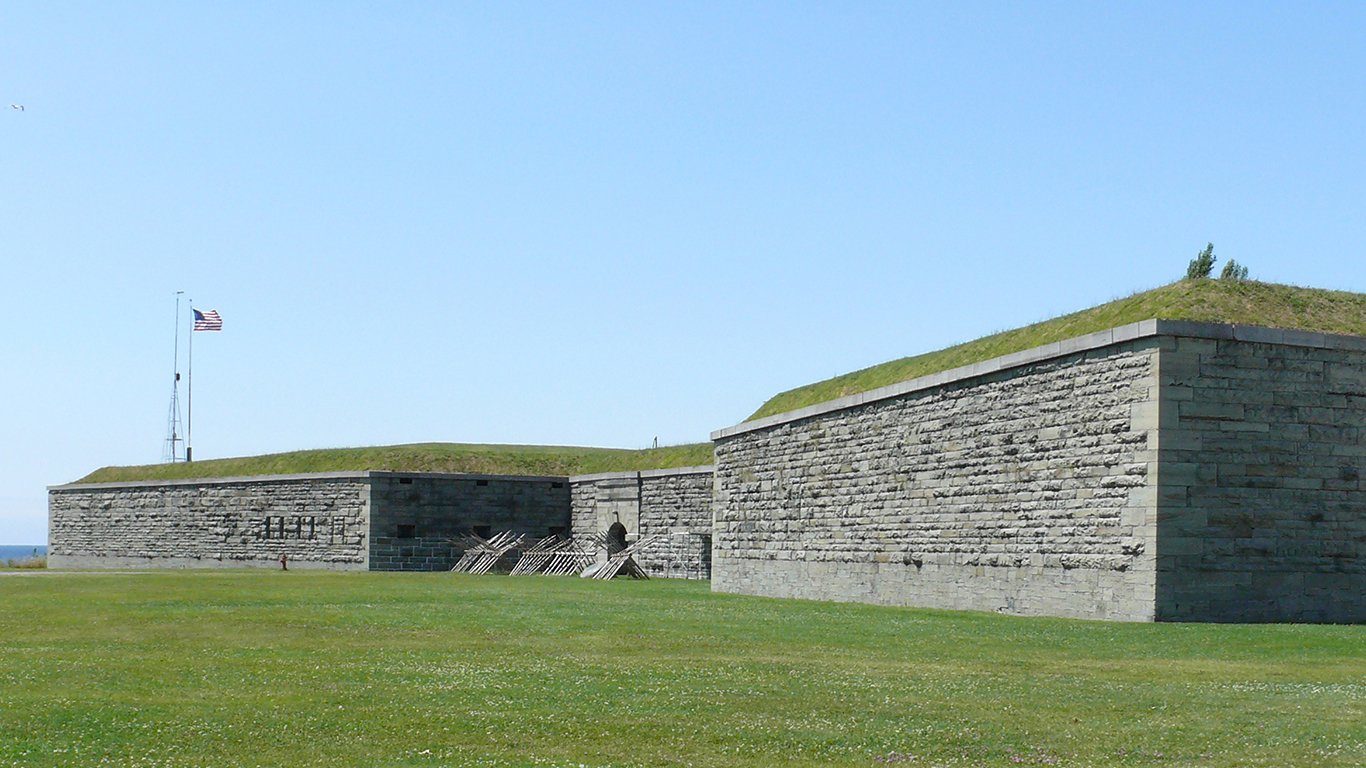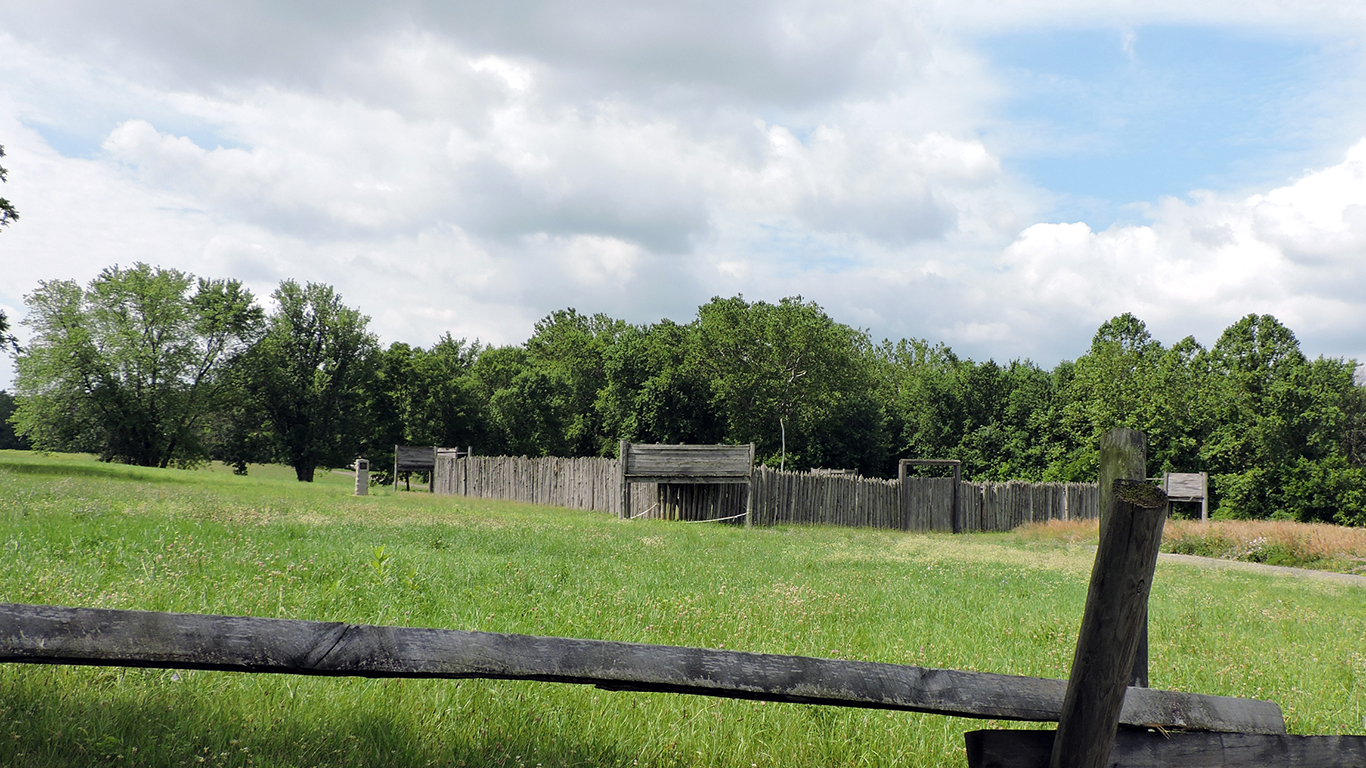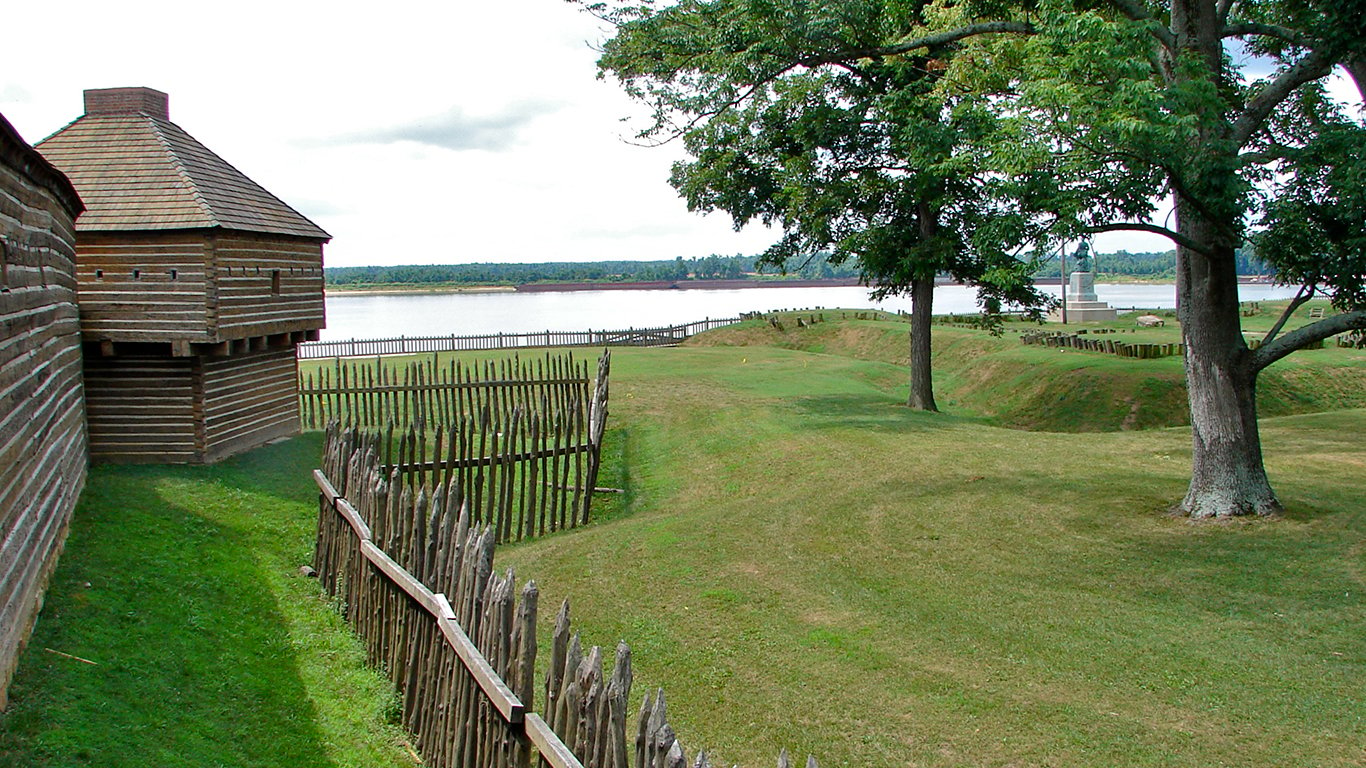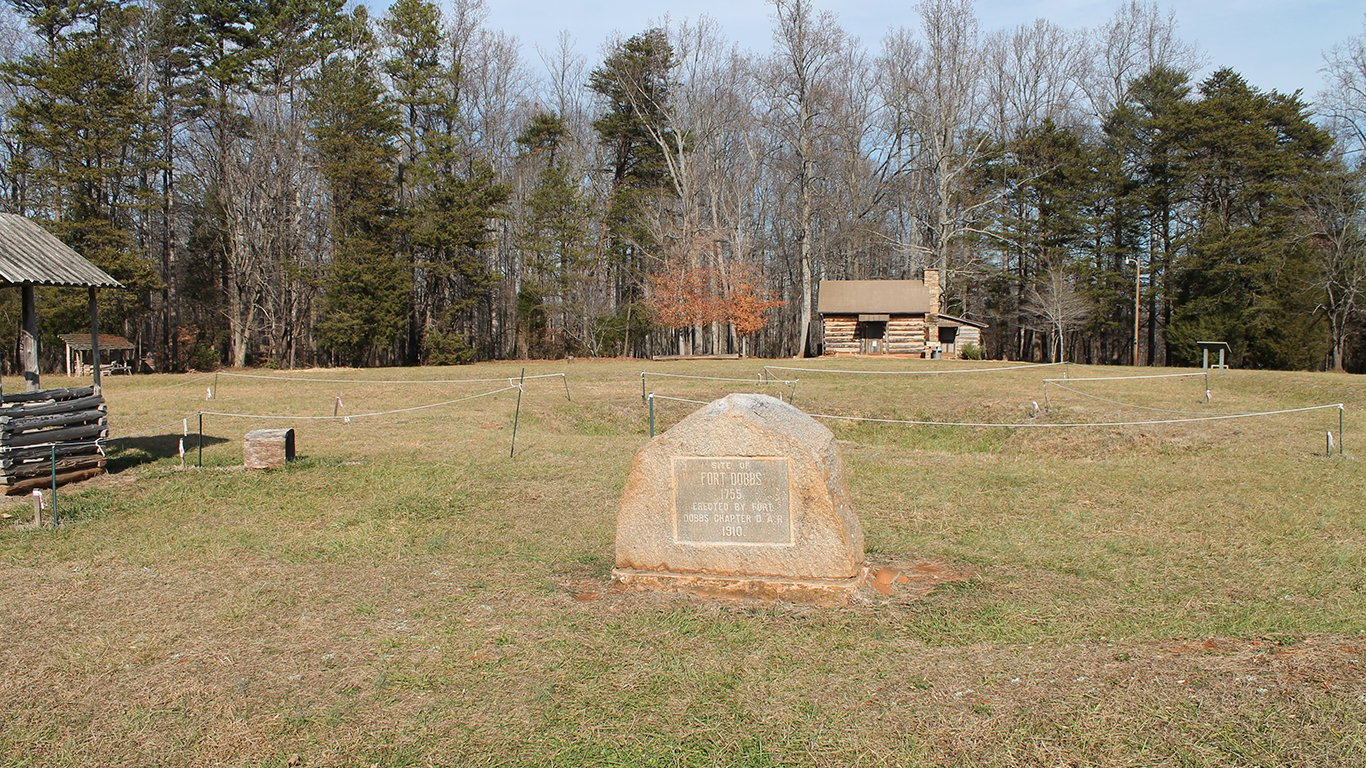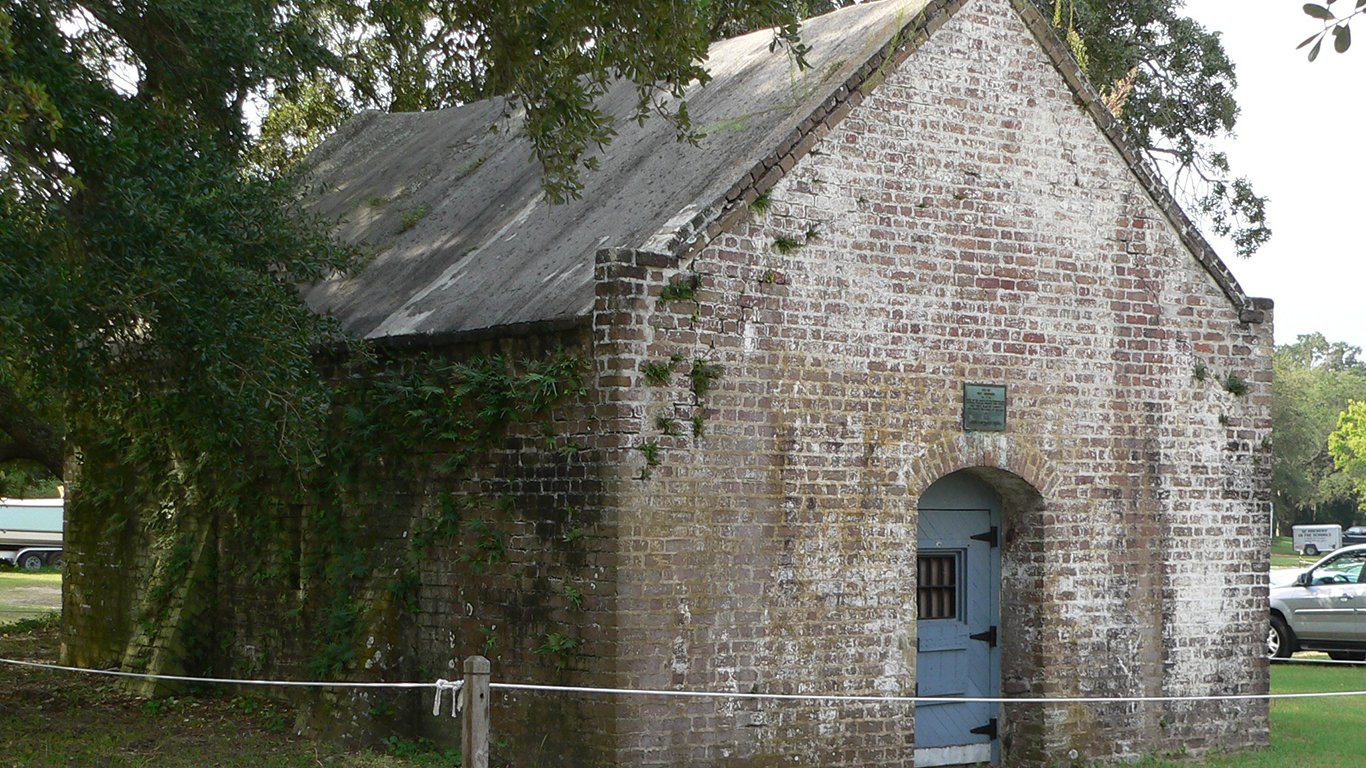Before the United States became independent, wars plagued North America, as the British, French, and Spaniards fought for control of the early colonies, with Native Americans sometimes fighting alongside them or launching their own offensives. To protect their lands, the European settlers took a page from the history books, constructing hundreds of forts, as they battled for control of the New World.
It wasn’t a new idea: Civilizations across the globe have built defensive walls to protect their cities from invasion and conquests for thousands of years, dating back at least to 4,700 B.C. in Neolithic Europe. (These are the 15 longest sieges in military history.)
To determine the oldest forts built in what is now the United States before it became a country, 24/7 Tempo consulted websites including Legends of America, Military History Fandom, and the National Park Service to find military fortifications that were built prior to 1775. In most cases, the original forts have not survived intact, but in addition to some surviving structures, the sites contain ruins, reconstructed facilities, or historically accurate replicas on the original fort grounds. (The list is not exhaustive.) Note that many of these forts remained in use after American independence.
Along with defending seaports from foreign navies and deterring attacks on the frontier, these forts were also the sites of important historical events, including the signing of treaties, visits from famous figures, and – in the case of Fort Johnson – the first raising of the South Carolina state flag. (Here’s how every war in U.S. history ended.)
Some of the fort sites are now located in city or state parks, often with visitor centers, museums, and programs of events. However, some sites may be temporarily closed due to storm damage, flooding, or archaeological work.
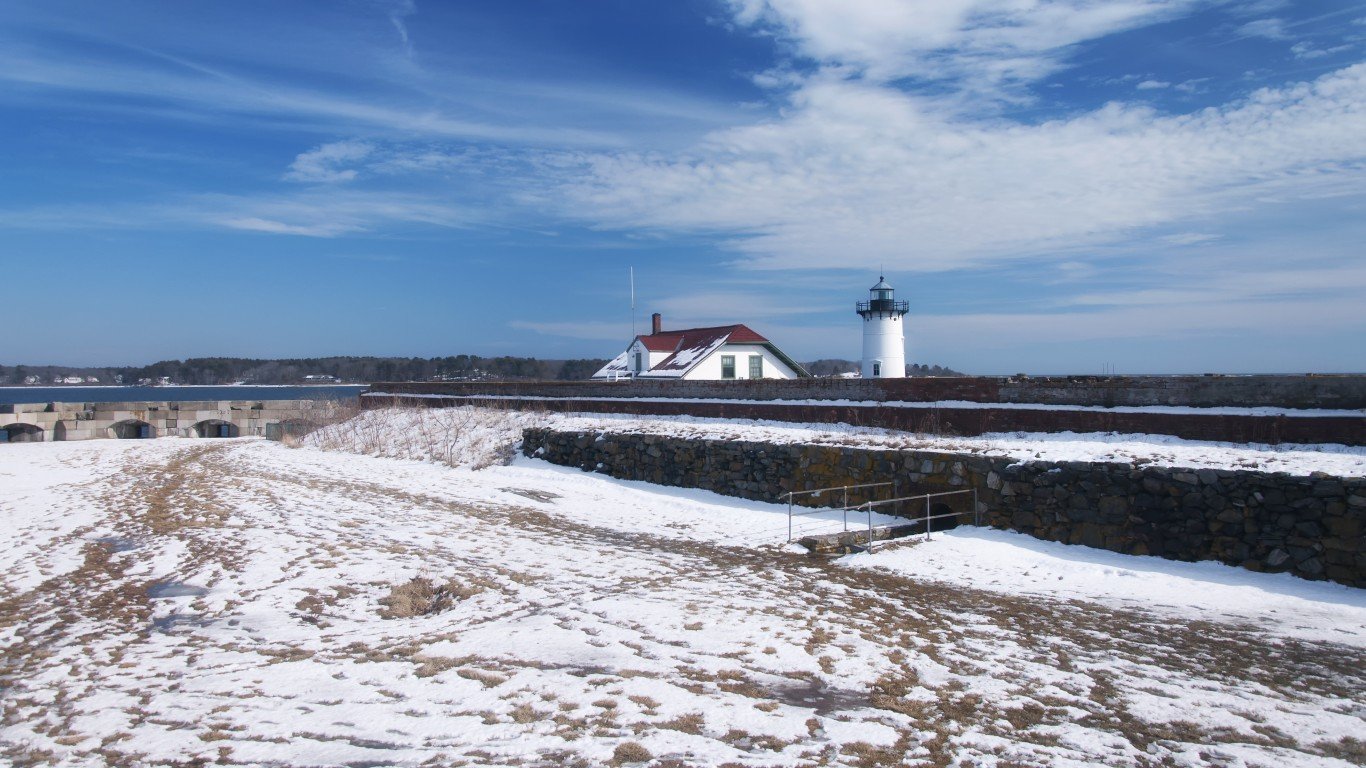
Fort Constitution
> Location: New Castle, NH
> Dates: 1632
Built by the British to guard access to the harbor at Portsmouth and originally known as The Castle and then Fort William and Mary, this fort was captured by Patriots during the Revolutionary War. The fort was rebuilt, and renamed Fort Constitution, in 1808, and expanded through 1899, ultimately operating through the 1950s. Visitors can still check out ruins from the 1808 structure. Now part of a New Hampshire state park, the site is also home to the Portsmouth Harbor Light, a lighthouse completed in 1878.
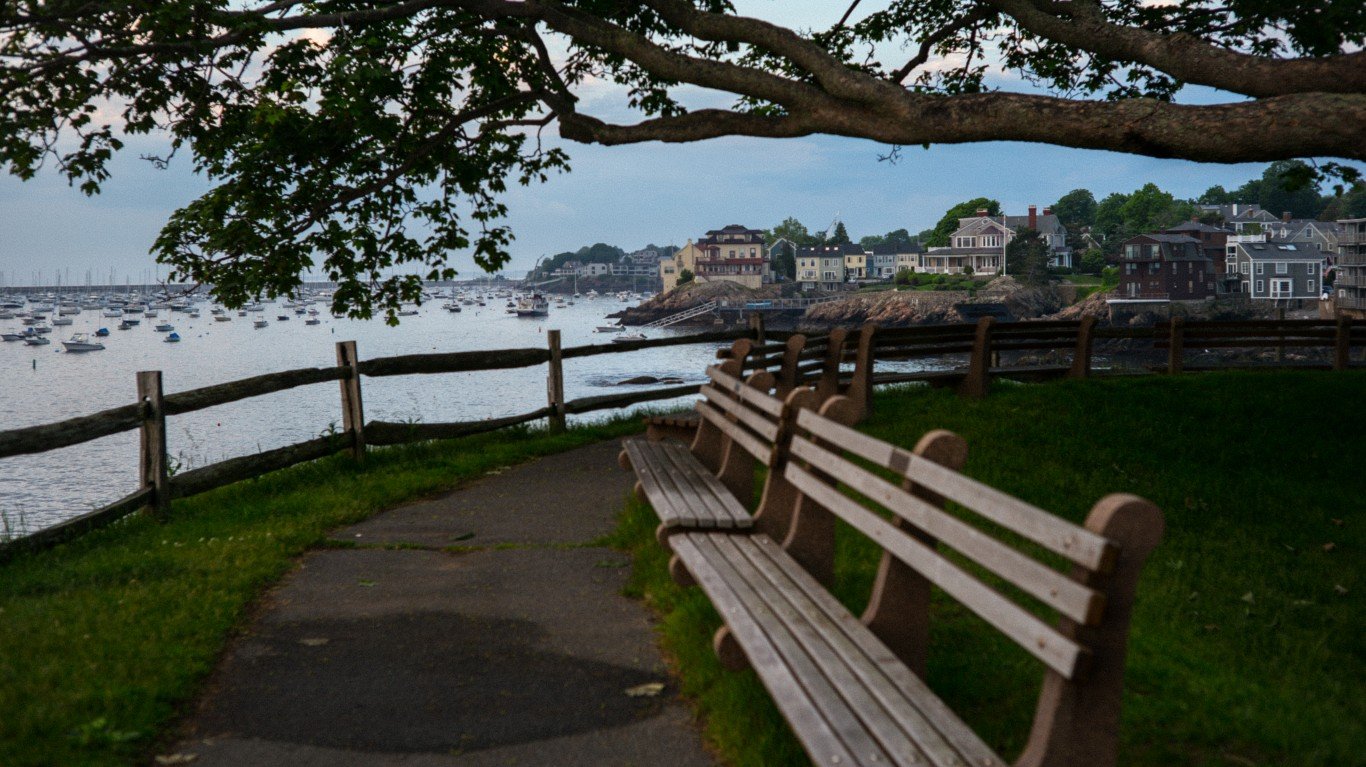
Fort Sewall
> Location: Marblehead, MA
> Dates: 1634
One of the oldest English coastal fortifications, Fort Sewall was last used during the Spanish-American War in 1898. In 1922, the federal government turned the fort over to the town of Marblehead, and it’s now open as a public park. Thanks to a $1.5 million dollar rehabilitation effort, the Fort Sewall Oversight Committee was able to give the structures a recent facelift, re-creating a gun platform and restoring the masonry work.

Fort Pickering
> Location: Winter Island, MA
> Dates: 1643
Fort Pickering served as a strategic coastal defense and military barracks for Salem Harbor over a variety of periods, from the Anglo-Dutch Wars through World War II. Today, you can visit the Civil War-era remains of the fort as part of the Winter Island Maritime Park.
Fort Nathan Hale
> Location: New Haven, CT
> Dates: 1659
Several forts have stood on this site, beginning with an unnamed British structure from 1659. In 1776, colonists built a new fortification here, dubbed Black Rock Fort. Before the War of 1812, it was reconstructed and named after American patriot Nathan Hale. The fort became a historic site in 1921. After years of neglect, it was brought back to life with the formation of the Fort Nathan Hale Restoration Project. Reconstruction, then rededicated in 1976, the fort is now the focal point of a 20-acre city park that draws visitors from around the world.
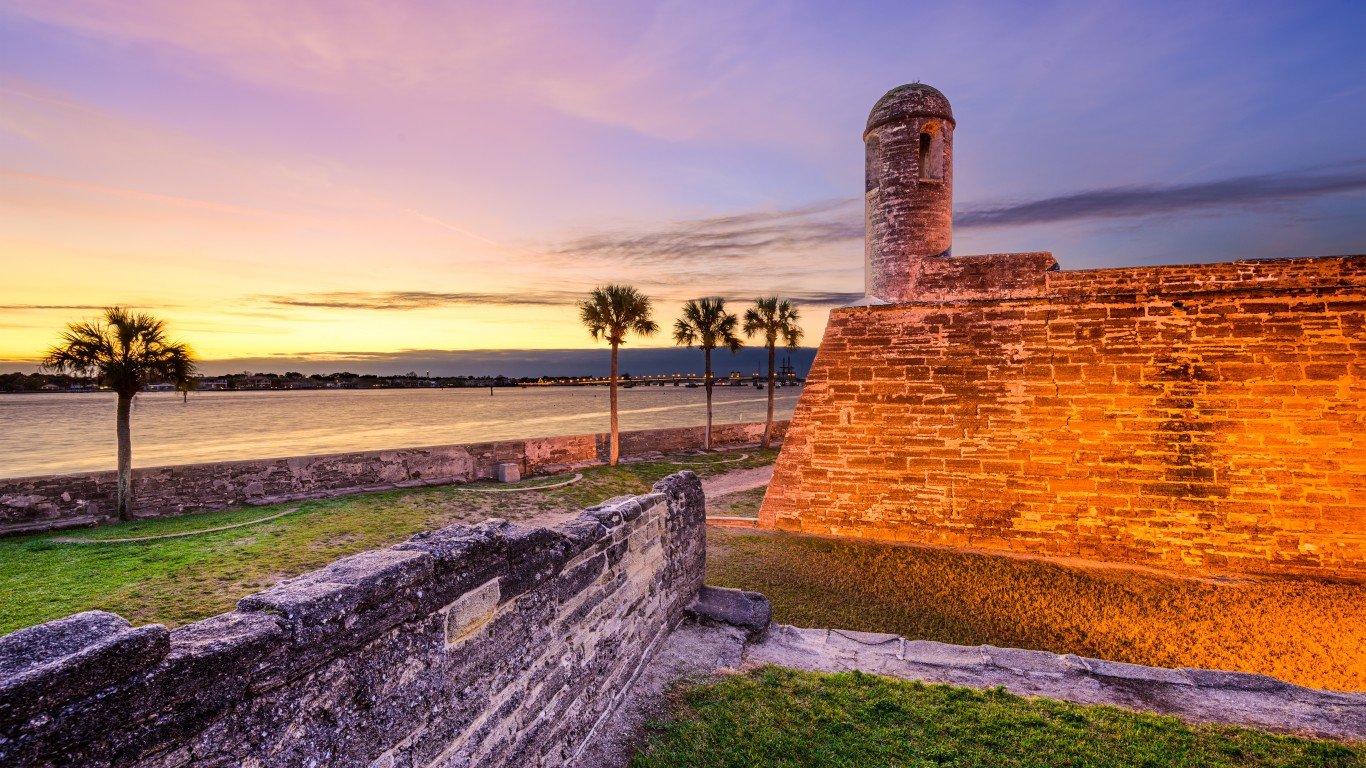
Castillo de San Marcos
> Location: St. Augustine, FL
> Dates: 1672
Castillo de San Marcos is the oldest surviving masonry fort in the country, first erected when Florida was part of the Spanish empire. The fort has changed hands five times under four governments, serving as a designated U.S. Army base beginning in 1821. The Castillo de San Marcos National Monument has become a popular tourist attraction,
Fort William Henry
> Location: Bristol, ME
> Dates: 1692
In its time, Fort William Henry was New England’s largest fort. However, the original structure was destroyed by New France in the Siege of Pemaquid in 1696. The state of Maine rebuilt it in 1908, using many of the original stones. Today, Fort William Henry is part of the Colonial Pemaquid State Historic Site, which includes the archaeological excavations of 17th- and 18th-century villages, period buildings, and a museum.
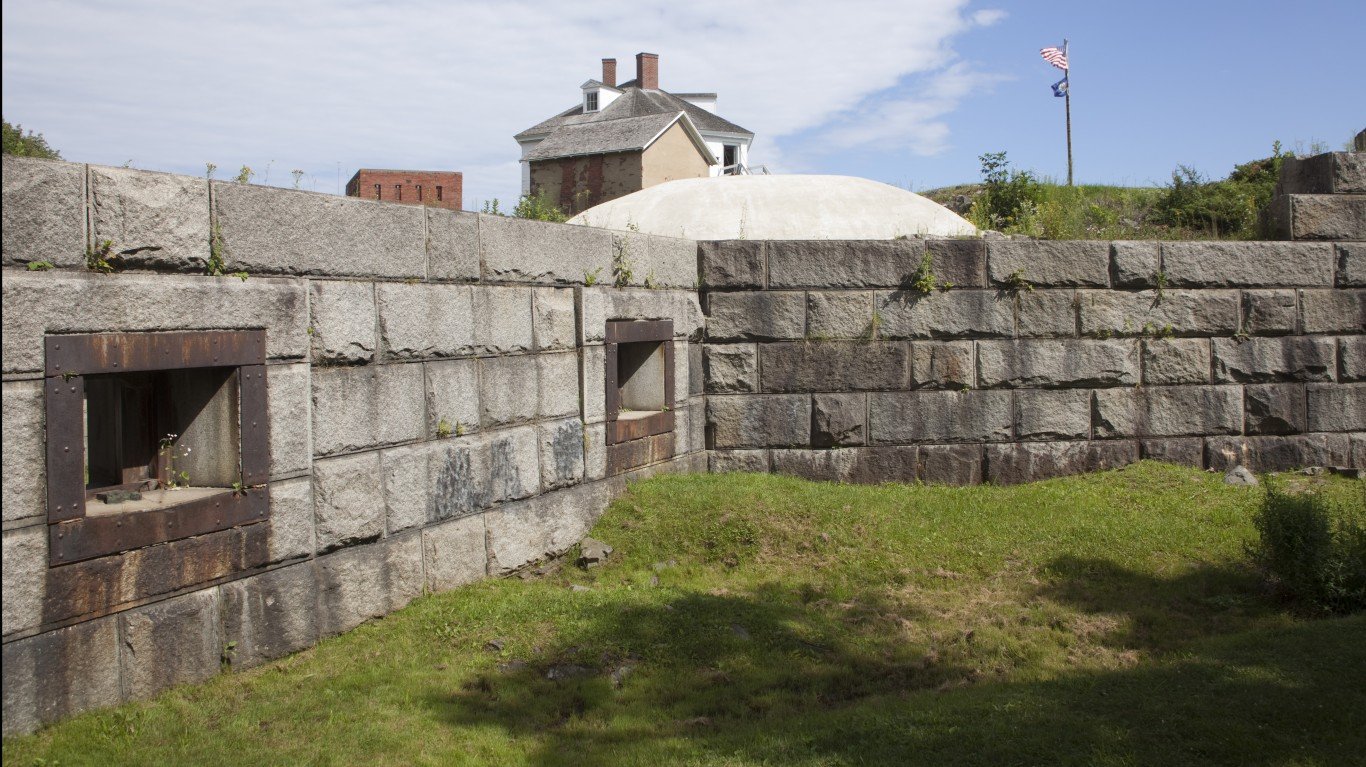
Fort McClary
> Location: Kittery Point, ME
> Dates: 1715
Throughout the 19th century, Fort McClary helped protect the approaches to the harbor of Portsmouth, New Hampshire, and the Portsmouth Naval Shipyard in Kittery. The surviving structures at what is now a state historic site include a blockhouse from 1844 and the Magazine Building, which was built around 1808 and is considered the oldest structure on the site. The blockhouse houses a museum, exploring the fort’s role in history.
Fort Toulouse
> Location: Wetumpka, AL
> Dates: 1717
The government of French Louisiana erected Fort Toulouse as a counter to the increasing influence of the British colonies of Georgia and Carolina. At the end of the French and Indian War in 1763, the fort was abandoned and left to decay. Another fort, Fort Jackson, was built on top of it in 1814 during the Creek War. A replica was built of Fort Toulouse during the American Bicentennial in the mid-1970s, but unfortunately was inaccurately positioned upon the outline of the much larger Fort Jackson. The Alabama Historical Commission rebuilt the replica in the 1980s. Visitors can see the recreated 1751 Fort Toulouse, Creek Indian houses, and the partially restored Fort Jackson at Fort Toulouse-Fort Jackson State Historic Site.

The Alamo Mission
> Location: San Antonio, TX
> Dates: 1718
One of the most popular historic spots in the country is the site of the Battle of the Alamo in 1836, where folk heroes James Bowie and Davy Crockett died. Today, this tourist destination is a museum in the Alamo Plaza Historic District and a part of the San Antonio Missions World Heritage Site. The site is open daily, except for Christmas Day, and guided tours for families, audio tours, history talks, and events are ongoing.
Fort de Chartres
> Location: Prairie du Rocher, IL
> Dates: 1720
This French fortification has been rebuilt multiple times, mainly due to repeated flooding from the Mississippi River. First used as an administration center for a province of New France, the fort was later operated by the British until it was abandoned and left to deteriorate in 1772. The present-day Fort de Chartres State Historic Site contains an imaginative reconstruction of parts of the third version of Fort de Chartres. The stone masonry powder magazine is the only structure from the 1772 incarnation that survived, and it’s considered the oldest building in Illinois.
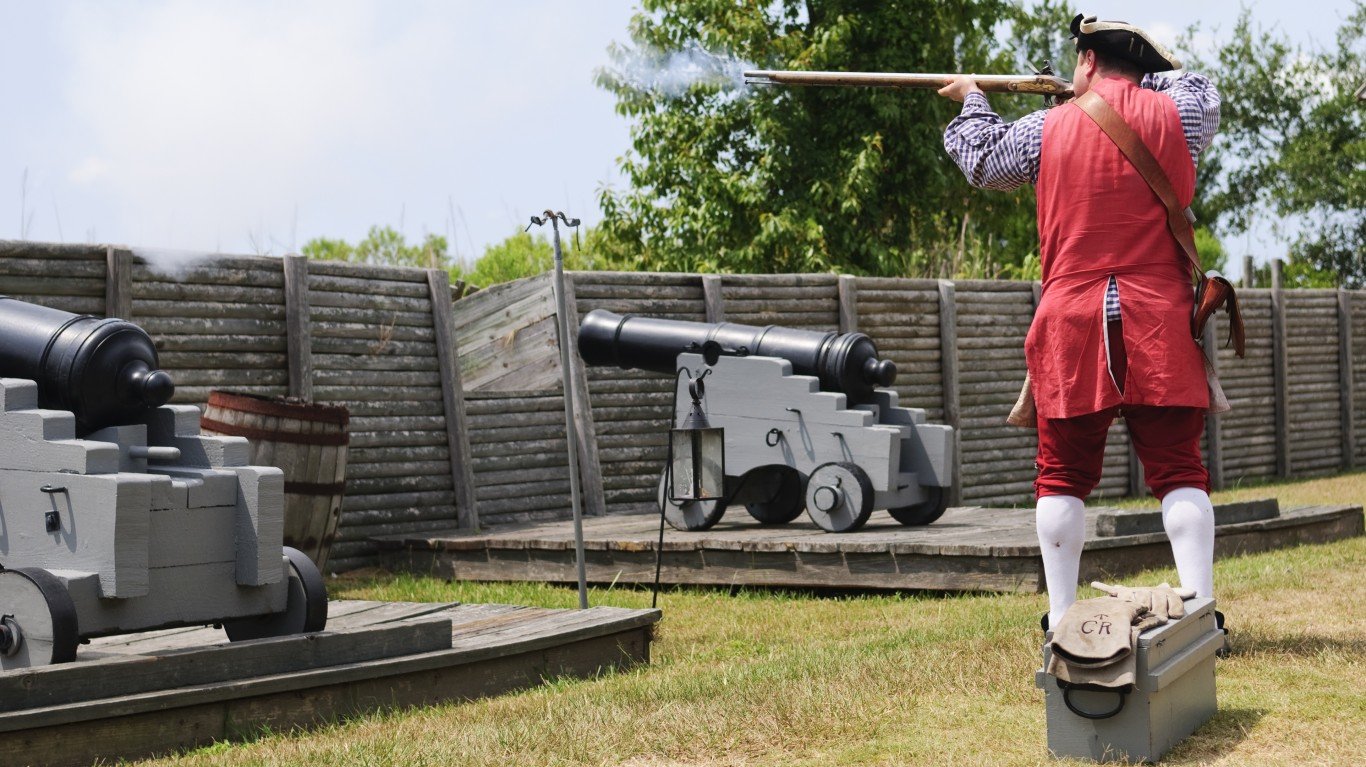
Fort King George
> Location: Darien, GA
> Dates: 1721
Built in 1721, Fort King George was the southernmost outpost of the British Empire in North America. For the first seven years, His Majesty’s Independent Company guarded the fort. However, disease, threats of Spanish and Indian attacks, and the harsh coastal environment resulted in the deaths of 140 officers. The fort was abandoned until 1736, when General James Oglethorpe brought Scottish Highlanders to the site. The new settlement, called Darien, eventually became a exporter of lumber. Through old records and drawings, the fort has been reconstructed, with such structures as a blockhouse, officers’ quarters, barracks, a guardhouse, and a moat.
Fort Niagara
> Location: Porter, NY
> Dates: 1726
New France originally built Fort Niagara to control access between the Niagara River and Lake Ontario, protecting its interests in North America. The British took over the fort during the French and Indian War and stayed until 1796, after the signing of the Jay Treaty. The U.S. Coast Guard continues to have a presence at the fort, though it has been deactivated since 1963. The 18th-century buildings are open to the public.
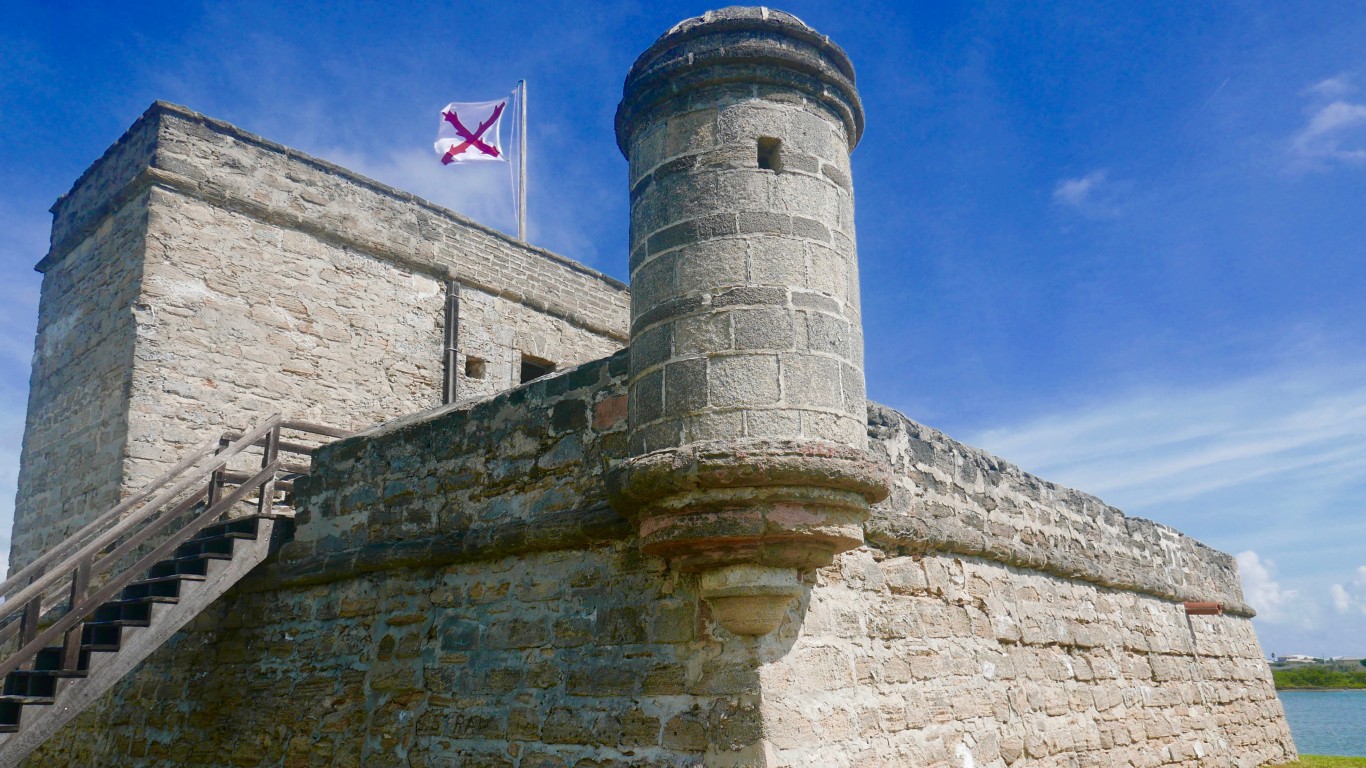
Fort Matanzas
> Location: St. Augustine, FL
> Dates: 1742
The Spanish constructed Fort Matanzas in 1742 to ward off British invasions of St. Augustine. Spain lost control of Florida with the 1763 Treaty of Paris and stopped maintaining the fort. When the United States took control of Florida in 1821, it deemed Fort Matanzas uninhabitable for its troops. However, beginning in 1916, the U.S. Department of War began a major restoration. Today, the Fort Matanzas National Monument offers free ferry rides to see the fort.
Fort at Number 4
> Location: Charlestown, NH
> Dates: 1744
The Fort at Number 4 was a stockade fortification protecting the northwesternmost village in the British colonies – Plantation Number 4. The fortification itself was actually a rectangle of six houses connected with lean-tos, created when the townsfolk voted to move several of their homes in 1744 to build a barricade. The original fort deteriorated after the Revolutionary War, but a recreation was constructed in 1960, and it is now an open-air museum.
Fort St. Marks
> Location: St. Marks, FL
> Dates: 1753
This colonial Spanish fort changed hands a few times, depending on which nation was governing the area – Great Britain, Spain, the United States, or the Confederacy during the Civil War. In 1859, the United States Marines built a hospital out of the old fort’s limestone and flint rock. Today, visitors to the San Marcos de Apalache Historic State Park can check out a museum with artifacts from the original fort and a visitor center, located on the foundation of the old hospital.
Fort Halifax
> Location: Winslow, ME
> Dates: 1754
The solitary blockhouse at Fort Halifax is the oldest of its kind in the United States today. The British originally constructed the wooden palisaded fort in 1754, during the French and Indian War, hoping to keep Canadians and their Native American allies from attacking English settlements via the Kennebec River Valley. Fort Halifax also hosted troops under Colonel Benedict Arnold on their way to Quebec during the American Revolution. Everything aside from the surviving blockhouse was dismantled after that. The west side of Fort Halifax Park is the site of continuous archaeological explorations.
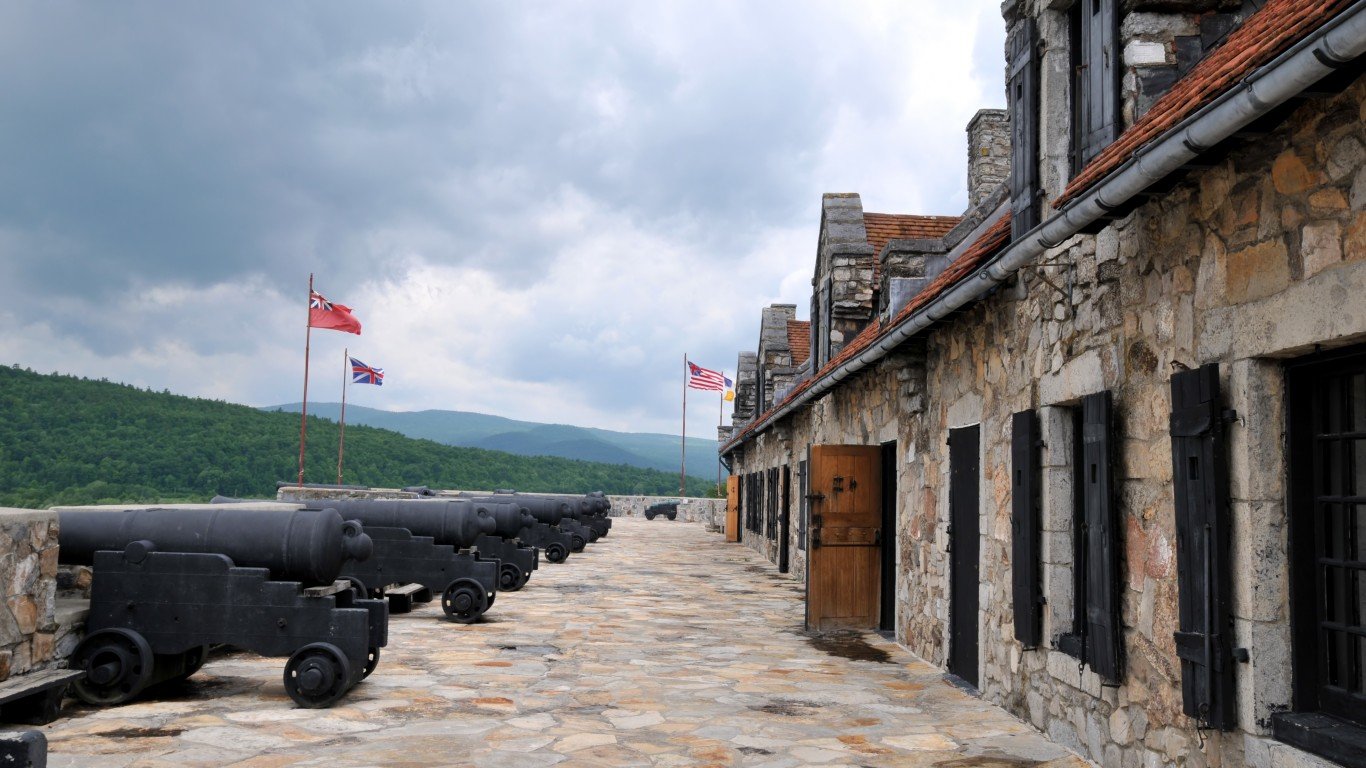
Fort Ticonderoga
> Location: Ticonderoga, NY
> Dates: 1755
French-Canadians built this star-shaped fort near the south shores of Lake Champlain in New York state during the Seven Years’ War. The British ended up controlling the fort from 1759 until it was captured by the Americans in a surprise attack in 1775. Even though the fort returned to British hands in 1777, it was ultimately abandoned. The fort was restored by a private family in the early 20th century, and today it’s a museum and tourist attraction.
Fort Ontario
> Location: Oswego, NY
> Dates: 1755
This British fort has been destroyed and rebuilt many times since it was first erected in 1755 during the French and Indian War. It also served as a military hospital and housed Jewish refugees during World War II. The restored fort is now open to the public as a state historic site from May through early October.

Fort Frederick
> Location: Big Pool, MD
> Dates: 1756
The colony of Maryland constructed this large stone fort during the French and Indian War, mainly as a refuge for area settlers. The fort later served as a prisoner of war camp during the Revolutionary War, with up to 1,000 captured British and German soldiers. By 1922, when the property was acquired by the state of Maryland, the walls had deteriorated but were standing up to eight feet high in places. A complete reconstruction was possible, thanks to the discovery of the original plans and archaeological investigations.
Fort Loudon
> Location: Vonore, TN
> Dates: 1756
Fort Loudoun was constructed by the British in what is now Monroe County, Tennessee, to encourage Cherokee support for the British at the outset of the French and Indian War. However, the relationship soured after a massacre of several Cherokee chiefs, and the Cherokee attacked the fort in 1760. The fort was rebuilt during the Great Depression, and the Fort Loudoun State Park offers an interpretative center featuring artifacts that were excavated prior to the Fort’s reconstruction.
Fort Massac
> Location: Metropolis, IL
> Dates: 1757
The French abandoned this colonial and early-national-era fort on the Ohio River after the French and Indian War. It was destroyed by the Chickasaw at some point after 1763. The fort rose again in 1794 during the Northwest Indian War. It hosted the Lewis and Clark Expedition in 1803 and General James Wilkinson and Vice President Aaron Burr in 1805, before it was decommissioned in 1814. A partial reconstruction from the 1970s was torn down in 2002 and replaced with a smaller, more detailed version of the fort, as it would have appeared in 1802.
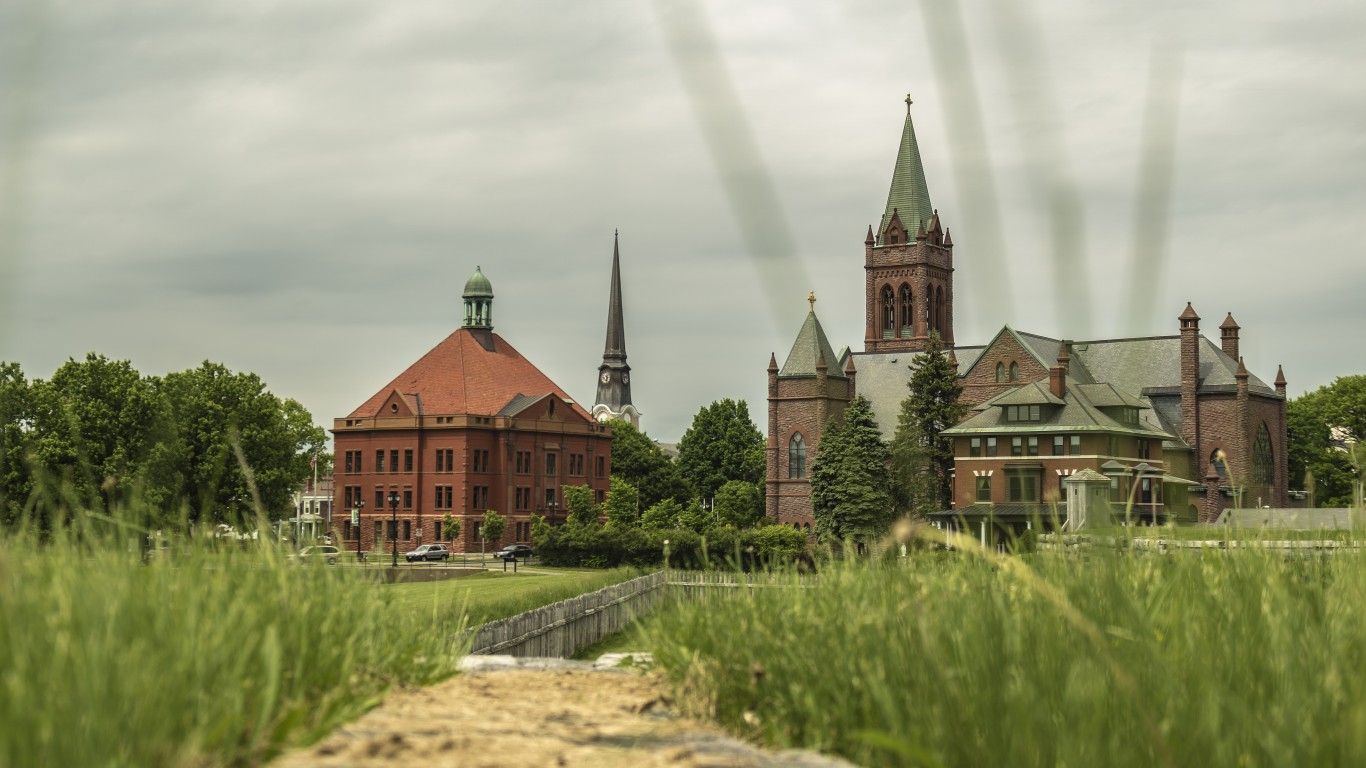
Fort Stanwix
> Location: Rome, NY
> Dates: 1758
This bastion fort is significant as the site of the 1768 Treaty of Fort Stanwix between Britain and Native American tribes and the 1784 Treaty of Fort Stanwix between the tribes and the American government. The fortifications were dismantled after 1828. A reconstruction was completed in 1978. The Marinus Willett Collections Management and Education Center serves as a regional tourism center, housing the Fort Stanwix National Monument’s nearly 500,000 artifacts, documents, and exhibits.
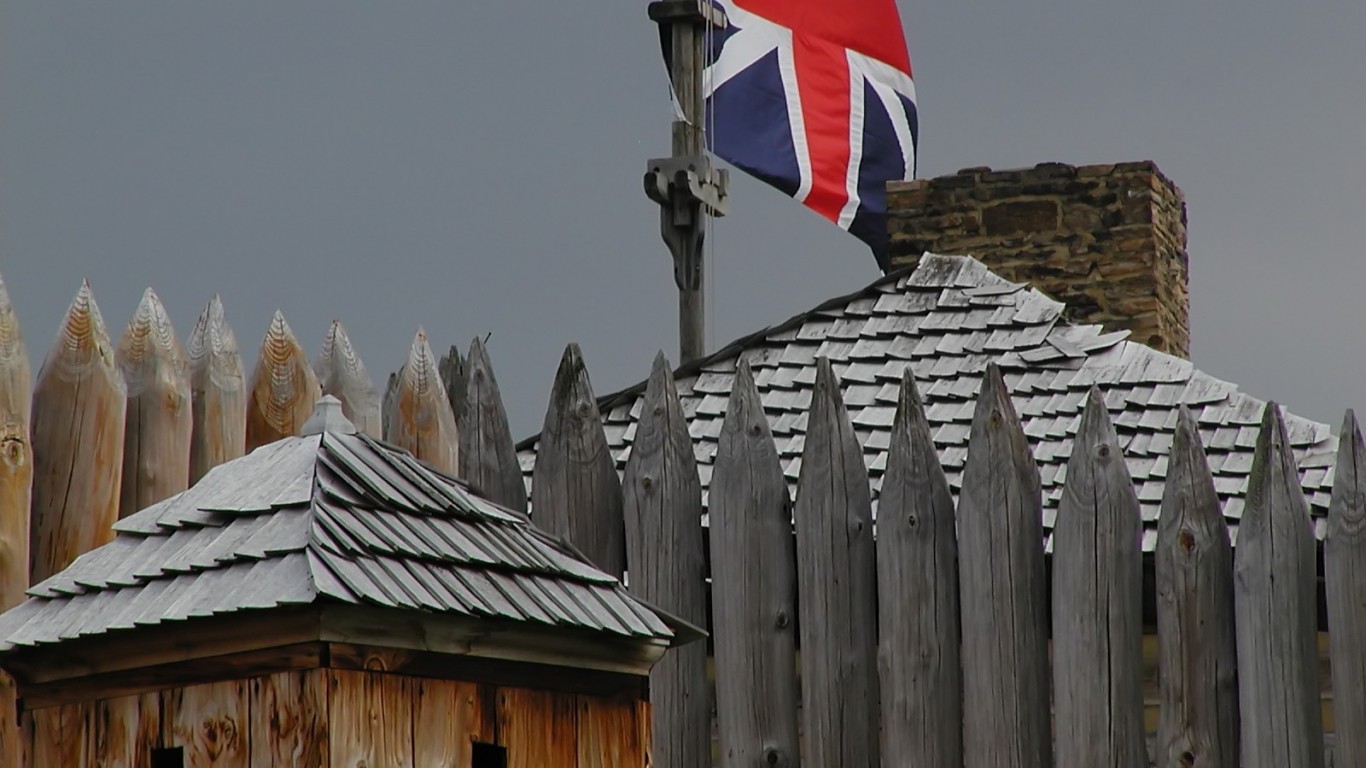
Fort Ligonier
> Location: Ligonier, PA
> Dates: 1758
Fort Ligonier, a British fortification from the French and Indian War, operated as a staging area for the Forbes Expedition of 1758. During Pontiac’s War of 1763, the fort served as a vital link in the British communication and supply lines. It was attacked and besieged by the Native Americans before the victory at Bushy Run that year and decommissioned in 1766. The fort’s cannons are fired on Fort Ligonier Days and an 18th Century Reenactment is held every year on Memorial Day weekend.
Fort Dobbs
> Location: Statesville, NC
> Dates: 1761
The 18th-century fort was used as a frontier defense during and after the French and Indian War, protecting the American settlers from French-allied Native Americans and serving as a major outpost for soldiers, traders, and colonial officials. Though Fort Dobbs largely decayed after it was abandoned by the end of 1761, archaeology and historical research helped determine its exact location and likely appearance. Reconstruction was completed in 2019. Today, tourists can “visit” with soldiers from wars past on the Fort Dobbs State Historic Site, with reenactments and demonstrations during events like the Military Timeline and Winter With the Western Company.
Fort Johnson
> Location: James Island, SC
> Dates: 1765
Fort Johnson was continually expanded during the French and Indian War, the Revolutionary War, and the War of 1812. Famously, it was the site of the first raising of the South Carolina state flag in 1775. A magazine that was constructed in 1765 was buried during the Civil War by Confederate soldiers and uncovered in 1931. It’s one of a few items left from the era. The South Carolina Department of Natural Resource now operates the site, and the College of Charleston uses a small part as a teaching and research facility.

